Learn
How many Shiba Inu coins are there? Current supply & future outlook
Published
3 months agoon
By
admin
Shiba Inu (SHIB) coin is a major contender for the meme coin throne, often referred to as as the ‘Dogecoin killer’ by its supporters.
As the coin continues to grow, more people are interested in the tokenomics of this project and find themselves wondering how many Shiba Inu coins are in circulation.
Understanding Shiba Inu coin (SHIB)
Shiba Inu was created in August 2020 by pseudonymous developers. Unlike tokens that live on a dedicated network, (SHIB) is an ER-C20 token that exists on the Ethereum blockchain. As such, it has access to DeFi and related services, giving it an advantage over similar meme coins with less utility.
This utility, coupled with an unusually high token supply, which we’ll discuss in the next section, has proven to be a distinguishing factor that has helped Shiba Inu stand out.
The ecosystem now includes projects like ShibaSwap (a decentralized exchange), NFTs, and the play-to-earn game Shiba Eternity.
With a dedicated community, the coin has exploded in popularity, becoming one of the top 20 cryptocurrencies by market cap now today.
Total supply of Shiba Inu coins
The Shiba Inu supply upon its 2020 launch was 1 quadrillion SHIB tokens, or one thousand trillion tokens. When SHIB was released, it had the largest token supply in the world. Unsurprisingly, the massive Shiba Inu circulating supply made news headlines and helped the project gain attention worldwide.

It’s worth noting that a large supply doesn’t necessarily impact the value or use case for the project, and many in the space viewed the supply as a gimmick. For new crypto users unfamiliar with tokenomics, it may have also seemed that SHIB tokens were ‘cheaper’ than other crypto tokens, and therefore more affordable.
Of course, the price of an individual crypto token shouldn’t be conflated with the worth of the actual crypto project itself! We’ll dig into how to understand the supply of a cryptocurrency in more detail later on, but first, let’s take a look at how many Shiba Inu coins are available today.
Current circulating supply of Shiba Inu
The SHIB crypto has not maintained its supply, and it currently stands at 589 trillion SHIB. Ethereum co-founder Vitalik Buterin sent 410 trillion tokens to a dead wallet in 2021, effectively destroying or ‘burning’ the tokens and stating he would donate the remainder to charity.
The SHIB community as a whole has also burned or destroyed large portions of the initial supply in order to make SHIB deflationary, meaning it becomes scarcer over time. In true crypto fashion, the community decides when these burns will take place democratically, with those who own the most SHIB tokens having the most voting power.
While it’s likely that the dev team are major shareholders, their identity is unknown and it’s not clear who the main voters in the community are.
This is aimed at reducing the total amount of Shiba Inu coins in an effort to make the tokens scarcer and thus, ideally, worth more money. Again, this comes down to the percentage of the supply owned per investor. If an investor owns 10 tokens in a project with a supply of 100 tokens, they own 10% of the total supply.
If the community burns 50 tokens and leaves just 50 in the total supply, that same investor now owns 20% of the total supply instead of 10%, and this may translate into a value increase for that investor.
Of the 589 trillion tokens left in the supply, a portion remains in locked or burned wallets, and this adds further scarcity to the token supply.
Why supply matters to investors
The value of a cryptocurrency is the number of coins multiplied by the price of the coins.
Market cap = price x supply.
This is true for regular companies and their stocks as well.
For example, Apple Inc. stock is worth $170 per share, while Berkshire Hathaway stock is worth $685,000 per share.
So is Warren Buffet’s Berkshire Hathaway company worth more than Apple Inc.?
No.
Apple is worth three and a half times more than Berkshire Hathaway, with a market cap of $3.45 trillion vs. $984 billion.
That’s because Apple has more shares than Berkshire Hathaway. The number of shares really doesn’t impact the price or value of the company at all, it’s simply a fairly arbitrary way of dividing up shares for sale.
Similarly, when someone buys SHIB tokens, they are buying a percentage of the overall supply.
So a project could have an even lower token price than SHIB, but be worth more due to having a higher market cap.
Investors are not concerned with how many units of a stock or a cryptocurrency they have, but what value those units represent.
In short, investors need to look at the token price and total supply when calculating the market cap, and the market cap is the actual value of the project, not the token price.
Future of Shiba Inu supply
The future of the SHIB supply will play a major role in the price of the project.
While burns are not typically announced ahead of time, they happen regularly and can be tracked online through tools like the Shibburn account on x.com
HOURLY SHIB UPDATE$SHIB Price: $0.00001623 (1hr 1.50% ▲ | 24hr -2.06% ▼ )
Market Cap: $9,517,223,488 (-2.64% ▼)
Total Supply: 589,269,152,127,483TOKENS BURNT
Past 24Hrs: 2,633,223 (226.54% ▲)
Past 7 Days: 2,006,818,487 (6121.99% ▲)— Shibburn (@shibburn) October 3, 2024
It’s not clear how many SHIB tokens will be burned in the future, and the project team will likely use the burning mechanism in response to headwinds against price as they see fit. Other price factors to be monitored include community initiatives and staking activities as well as any strategic partnerships secured by Shiba Inu.
Comparing Shiba Inu’s supply to other cryptocurrencies
As we now know, the Shiba Inu supply is unusually high.
We also know that this supply alone does not dictate the worth of a cryptocurrency, but needs to be factored in alongside token price and market capitalization.
Shiba Inu vs. Dogecoin (DOGE): Dogecoin has a circulating supply of approximately 141 billion DOGE. Unlike SHIB, which has an active burn mechanism, Dogecoin has an unlimited supply with annual inflation.
Shiba Inu vs. Bitcoin (BTC): Bitcoin is known for its capped supply of 21 million BTC, with over 19 million BTC already in circulation. Bitcoin also has a halving mechanism whereby the number of bitcoins minted each year is reduced by half every four years, making Bitcoin an increasingly scarce and deflationary asset. Unlike SHIB, the Bitcoin halving is programmatic and pre-ordained.
Bitcoin will halve its supply every four years and stop minting new tokens altogether in the year 2140. The certainty of this deflationary mechanism is one of the aspects of the Bitcoin project that has made it so valuable.
FAQs
How many Shiba Inu coins were initially released?
Initially, 1 quadrillion Shiba Inu coins were released when SHIB was launched in August 2020.
How many Shiba Inu coins are left?
After Vitalik Buterin’s burn and ongoing community-led burns, the total circulating supply of Shiba Inu is around 589 trillion SHIB.
How many Shiba Inu coins are burned daily?
The number of SHIB tokens burned daily varies, as it is often community-driven. At the time of writing, over two billion tokens were burned in the past week.
How many Shiba Inu coins are mined per day?
Unlike Bitcoin, Shiba Inu cannot be mined. The entire supply was minted and released upon launch, and no new tokens will be created.
Who owns the most Shiba Inu?
Currently, the largest holders of Shiba Inu include decentralized exchanges (DEXs) and wallets linked to community initiatives. Vitalik Buterin remains a major holder, and the other holders are unknown.
Source link
You may like
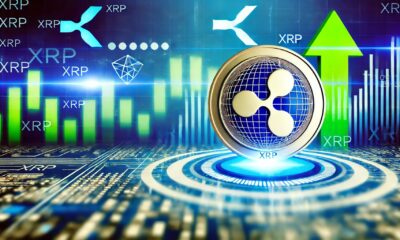

Wave 2 And 5 Targets Put XRP At $7 And $13


NEIRO’s success shadowed; Catzilla’s presale sparks new market buzz


3 Key Metrics That Hint Bitcoin Price Will Hit $100K Soon
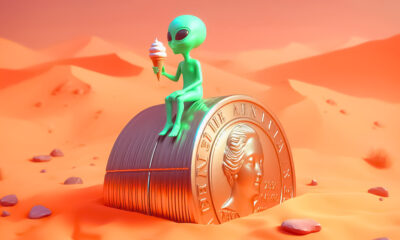

Macro Guru Raoul Pal Predicts Crypto Market Will Rally ‘Pretty Strongly’ Into Year-End – Here’s His Outlook


Blockchain auditor Hacken launches AI-powered MiCA-compliance tool for crypto firms
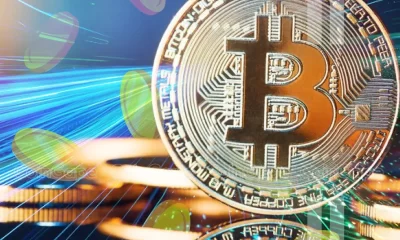

Crypto in 2024: A Game-Changing Year for Investors
cryptocurrency
What is Hedera Hashgraph (HBAR)? Guide to History, Uses, and Trends
Published
2 weeks agoon
December 13, 2024By
admin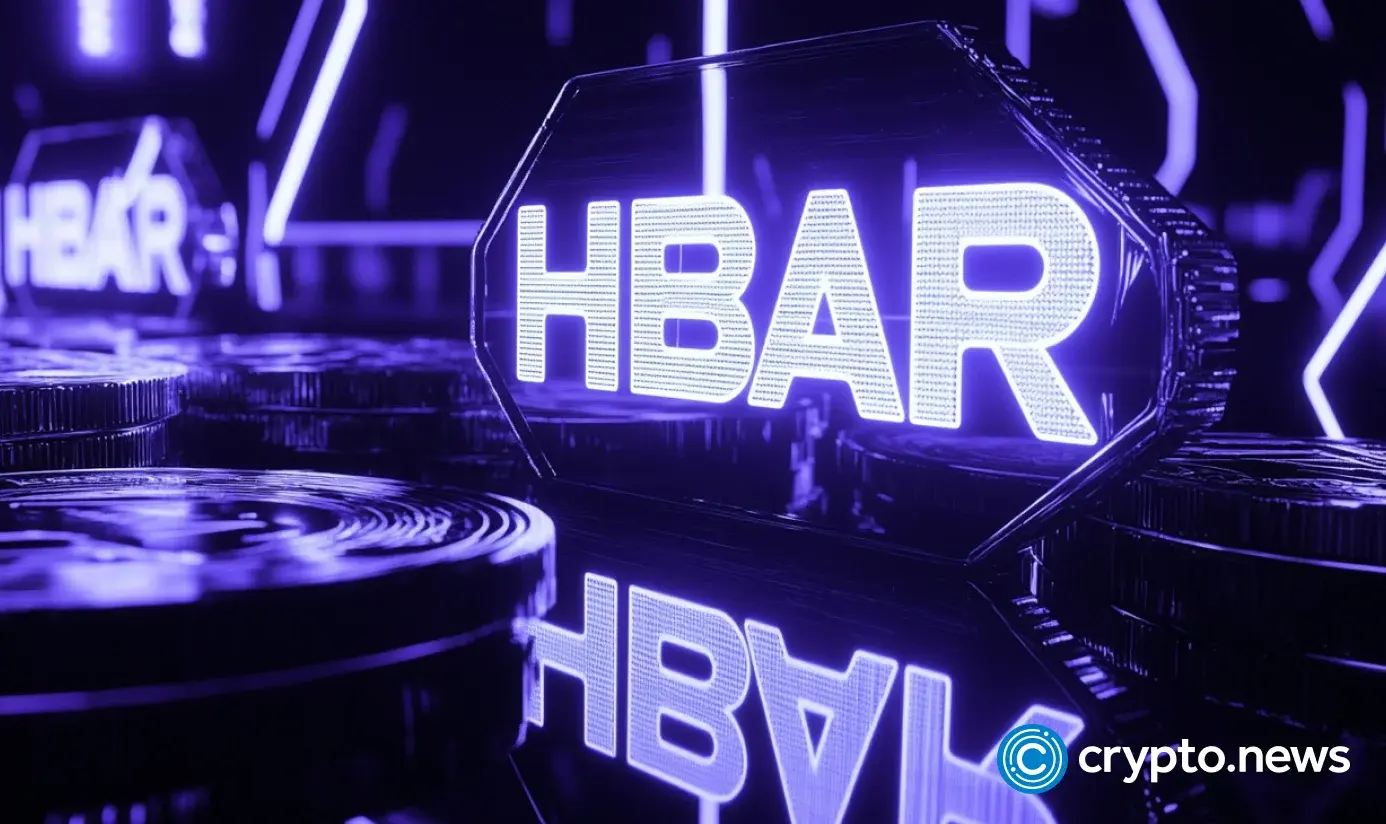
The Internet is a big world; every country represents a digital ledger. Most of these ledgers are blockchains but most have ‘slow economies’. Here is where the global leader Hedera Hashgraph comes into the picture. It is a distributed ledger technology that replaces the old blockchain system, making the ‘economy’ fast, fair, and secure.
In this article, we will discuss what is hedera hashgraph, how it works, its key features, the challenges it faces, and the future of Hedera (HBAR).
What is HBAR?
The Hedera (HBAR) token is the native token of the Hedera ecosystem. The entire network’s transactions are fueled by HBAR, which guarantees their speed and security.
In simpler words, you can consider Hedera’s HBAR as the rocket fuel, allowing users to pay for network services like file storage, smart contracts, and token production. Through staking, HBAR contributes significantly to preserving the integrity of the network in addition to serving as a transactional tool for users to take advantage of the key features offered by Hedera’s infrastructure.
At the time of writing, the HBAR token is trading at around $0.313 and has experienced around 800% price surge in the past 2 months.
How does Hedera Hashgraph work?
A decentralized network of nodes makes up the Hedera Hashgraph ecosystem, which verifies transactions and adds them to the common ledger. The Public Hedera Network’s Hashgraph consensus method is built for fast transaction speeds and low latency, guaranteeing quick and effective transaction processing.
Fundamentally, Hedera Hashgraph relies on a novel consensus process known as “gossip about gossip.” Until everyone agrees, nodes exchange information about who they spoke with and what transactions they are aware of.
Byzantine Fault Tolerance and fairness are maintained while the inefficiencies of blockchain’s proof-of-work are eliminated. The network is very quick and impenetrable since transactions are timestamped and arranged according to when the majority of the network gets them.
The Hedera platform allows developers to create smart contracts that facilitate the execution of transactions and the operation of decentralized apps.
The platform’s native cryptocurrency, HBAR, is utilized for handling and safeguarding network transactions. A technical board and a council oversee the platform, and HBAR holders have the power to shape significant choices about the project’s future.
Now let’s discuss what is Hedera Hashgraph used for.
How to use Hedera Hashgraph and HBAR?
Using Hedera is a straightforward process. It offers APIs that let developers manage smart contracts, create tokens, and build decentralized apps.
The Hedera ecosystem is made up of several components that cooperate to form the network as a whole. It consists of nodes that record transactions, developers who use the Hedera SDK to create dApps and smart contracts, businesses, and organizations like IBM and LG that play around with the technology.
For more efficient operations, businesses can use Hedera’s token services and file storage. HBAR can also be used by regular users to make payments, stake, or communicate with dApps. To enter this quick and safe ecosystem, all you need is some HBAR and a wallet that works with Hedera.
Hedera’s cryptocurrency holders use the cryptocurrency for platform oversight and operations, and dApp users take advantage of the quick and safe transactions made possible by Hashgraph technology.
Key features and benefits of Hedera Hashgraph and HBAR
Speed is one of the key features of Hedera Hashgraph as it is designed to handle thousands of transactions per second with very low latency. It is environmentally beneficial thanks to its energy-efficient consensus method.
It also offers key benefits including its Hedera services which include Consensus-as-a-service (CaaS), file storage, identity management, and cryptocurrency payments. These services use hashgraph technology, which offers lightning-fast speeds, safety, and flexibility.
The Hedera platform’s native cryptocurrency is called HBAR Token. In addition to voting on important platform decisions, it is utilized to process and secure network transactions.
Furthermore, the Hedera SDK gives developers the resources and tools they need to create smart contracts and dApps on the Hedera platform. It provides a large selection of languages of programming as well as the ability to integrate with other platforms and programming tools.
The usefulness of HBAR extends to network transaction fuelling, governance, and staking. It is a solid option for both developers and businesses because of its fairness, decentralization, and regulatory compliance features.
How to buy, store, and use HBAR
Buying, selling, and storing Hedera’s cryptocurrency i.e. the HBAR token is a straightforward process.
The easy way is to create an account on any major centralized exchange like Binance, Coinbase, or Bybit. Then you can deposit fiat currency and buy a stable coin in which HBAR is traded on that exchange. In this case, it can be USDT or USDC.
Then you can buy the HBAR token at its current price or set a buy limit on which you want to buy the HBAR token. After buying the tokens will show in your exchange wallet after which you can sell them by using market or limit order.
The other option is to use decentralized exchanges like Uniswap or Pancakeswap to buy HBAR tokens which can be done after creating a digital crypto wallet like Metamask. After buying the token you can secure it in your digital crypto wallet and sell it by going to any decentralized exchange.
If you don’t want to store HBAR tokens in your digital wallet or any centralized exchange you can also stake HBAR by following the official guide here.
Challenges and criticisms
Hedera Hashgraph offers impressive technology that solves a lot of problems that normal blockchains don’t, however, despite its excellent technology, its governance mechanism comes under criticism now and then. This is because, despite the diversity of its governance council, the authorities on the governance panel are centralized which points questions to the core concept of decentralization on which every cryptocurrency stands on.
Additionally, the coding behind Hedera Hashgraph isn’t open-source which can be a security issue as public audit of code is often a better alternative than keeping it private. While Hedera does claim to be highly scalable this claim hasn’t been tested in the real world, however, as crypto gets wider acceptance, a large number of users can be onboarded to Hedera’s platform and it may pose a challenge to it in the future.
Future of HBAR and Hedera Hashgraph
The roadmap outlined by Hedera’s team is impressive. The network’s potential for use in the gaming, supply chain, and financial industries increases as it shifts to a more decentralized governance and consensus architecture. The usefulness of HBAR will increase with further improvements, such as mirror nodes for increased transparency and sharding for scalability.
Collaborations with significant corporations such as Google and IBM show faith in Hedera’s goal. A promising future is indicated by the growing usage of Hedera for identity management, tokenization, and safe micropayments. Hedera has the potential to be a key component of Web3 infrastructure if it can successfully negotiate regulatory environments and keep coming up with new ideas.
How many Hedera coins are there?
The total and max supply of the HBAR token is set at 50 billion tokens and its circulating supply is 38 billion (at the time of writing). This essentially means that Hedera Hashgraph cannot mint more HBAR tokens which is a good sign for the long-term stability of any cryptocurrency project.
Source link
cryptocurrency
What are security tokens? A guide to asset-backed tokens
Published
2 weeks agoon
December 12, 2024By
admin

You probably come across a lot of paperwork and restrictions when it comes to buying a piece of real estate or a company share in the real world.
Security tokens offer a solution to this problem by becoming a digital representation of your real-world asset in the blockchain world.
In this article, we’ll take a deep dive into what are security tokens, their types, how they work, and their future in the cryptocurrency world.
What is a security token?
Security tokens are the bridge between traditional finance and digital assets. These non-tangible tokens represent your ownership in the real world and hence make the whole process of buying, selling, and trading real-world assets a whole lot easier.
It can be any real-world asset including real estate, stocks, bonds, or even a piece of art. If it’s tangible and can be bought and sold, it can be tied to a security token through which ownership can be transferred easily from one person to another.
While normal cryptocurrencies may not be subject to many regulations, tokens acting as security must abide by stringent regulatory laws to keep operating as a security. They are usually issued through a process known as Security Token Offering (STO), in which interested investors buy tokens that represent their ownership of any physical or digital asset in the real world.
Now that we’ve explained security tokens, let’s learn how they work.
How do security tokens work?
Security tokens operate on blockchain platforms that are coded through smart contracts that abide by strict laws of ownership and transfer, coded within them. Each token represents an ownership or a real-world asset, and anyone who owns a token acting as security has a legal claim to a share of the asset to which the token is tied.
As discussed above, these tokens are issued through an STO which ensures the rights of both the issuer and investor of the token. Blockchain and smart contracts play a key role in automatically calculating and transferring ownership of security tokens from one party to another without the need for third-party intermediaries.
Furthermore, anyone can own a fraction of a real-world asset and isn’t bound to buy the whole asset, making this concept even more attractive for global investors.
Types of security tokens
There are many types and examples of security tokens in the real world, however, not all of them are popular. Here we will discuss some of the most commonly used tokens that act as securities for real-world assets:
Debt tokens: Companies can issue debt tokens that represent loans or bonds issued by them, and these tokens are then used for paying interest to token holders over time.
Equity tokens: Equity tokens are given to anyone who purchases a company’s share or ownership. In return for buying equity tokens, a person can vote on governance matters and claim the company’s profits as long as they hold the equity tokens and don’t transfer them to another user.
Asset-backed tokens: Asset-backed tokens are one of the classic security tokens examples, as they tied to tangible assets like real estate, gold, or artwork. These tokens give investors fractional ownership of these assets, making these big markets easier to access for a global audience.
Each type of token that acts as security offers unique opportunities for investors to diversify their portfolios and gain exposure to new asset classes while maintaining compliance with regulations.
Advantages of security tokens
Security tokens offer a lot of advantages to the global financial ecosystem which includes investors, issuers of these tokens, and the general public as well. Here are some of them:
Liquidity: Limited access means less liquidity and this restriction is lifted when real-world assets are tied to securities which are represented by digital tokens that can be bought by anyone in the world without much paperwork or travel.
Transparency: Every transaction on the blockchain has a permanent record, is secure, and is tamper-proof and all of this promotes transparency between the issuer of the tokens and the investors as well.
Fractional Ownership: Not everyone has the same level of financial capacity to buy an expensive piece of art or real estate. Instead, tokens acting as security allow everyone to buy some part of a real-world asset and sell their part of the asset in profits, when that asset has appreciated over time.
Automation: The lack of human involvement on the blockchain on which these tokens operate, reduces any administrative costs and errors. Real-world assets are bought and sold seamlessly, and dividend distribution and ownership transfers happen within seconds by following automated hard-coded laws in the blockchain’s smart contract.
Security token vs cryptocurrency
While both cryptocurrencies and security tokens may seem the same at first glance, in reality, they have a lot of differences between them.
You see cryptocurrencies like Bitcoin or Ethereum are digital money that are traded on crypto exchanges and are primarily not tied to any asset or claim, and are purely used as a store of monetary value.
On the other hand, tokens acting as security directly represent ownership of assets in the real world. They are also required to follow strict laws of traditional investments in the real world. Cryptocurrencies are unregulated and often decentralized, while tokens issued as securities are issued in a legal environment with regulated and documented laws.
Challenges and risks
Regulatory uncertainty poses the biggest challenge and risk in the mass adoption of tokens that are deemed as securities or plan to apply for becoming a security token. While many countries have shown interest in this concept, there is still confusion about when proper laws will be formed around these tokens that provide a sense of security for investors and issuers alike.
Not being widely accepted also means that liquidity can be a big problem as they are not yet traded on traditional exchanges. A limited market means it is difficult for a common investor to invest in tokens acting as security and choose to go for traditional cryptocurrencies instead.
Also, the technology behind these tokens on the blockchain is still evolving, which means a potential threat of security breaches is possible.
The future of security tokens
According to several experts, tokens registered as security have a bright future ahead of them and will completely transform the financial sector. This means that the capacity to tokenize a broad range of assets, is anticipated to grow and we may get to see more security token examples in the future.
Furthermore, advancements in smart contract technology will make asset ownership and transfer even more efficient. A wider institutional acceptance of blockchain-based securities is expected which might boost traditional financial sectors including private equity, real estate, and banking.
Overall, the future of these tokens is heavily dependent on two key factors. One is the extent of advancement in blockchain technology and whether it can handle the risks and capacity of challenges that will arise. And secondly, it is regulatory compliance on a global scale that will make or break the future of these tokens in the real world. In all of this uncertainty, your job is to learn what is a security token and spread awareness about its advantages and risks in your ecosystem which may fuel its adoption significantly.
Source link
crypto education
What is a crypto swap? Crypto swaps explained simply
Published
2 months agoon
November 8, 2024By
admin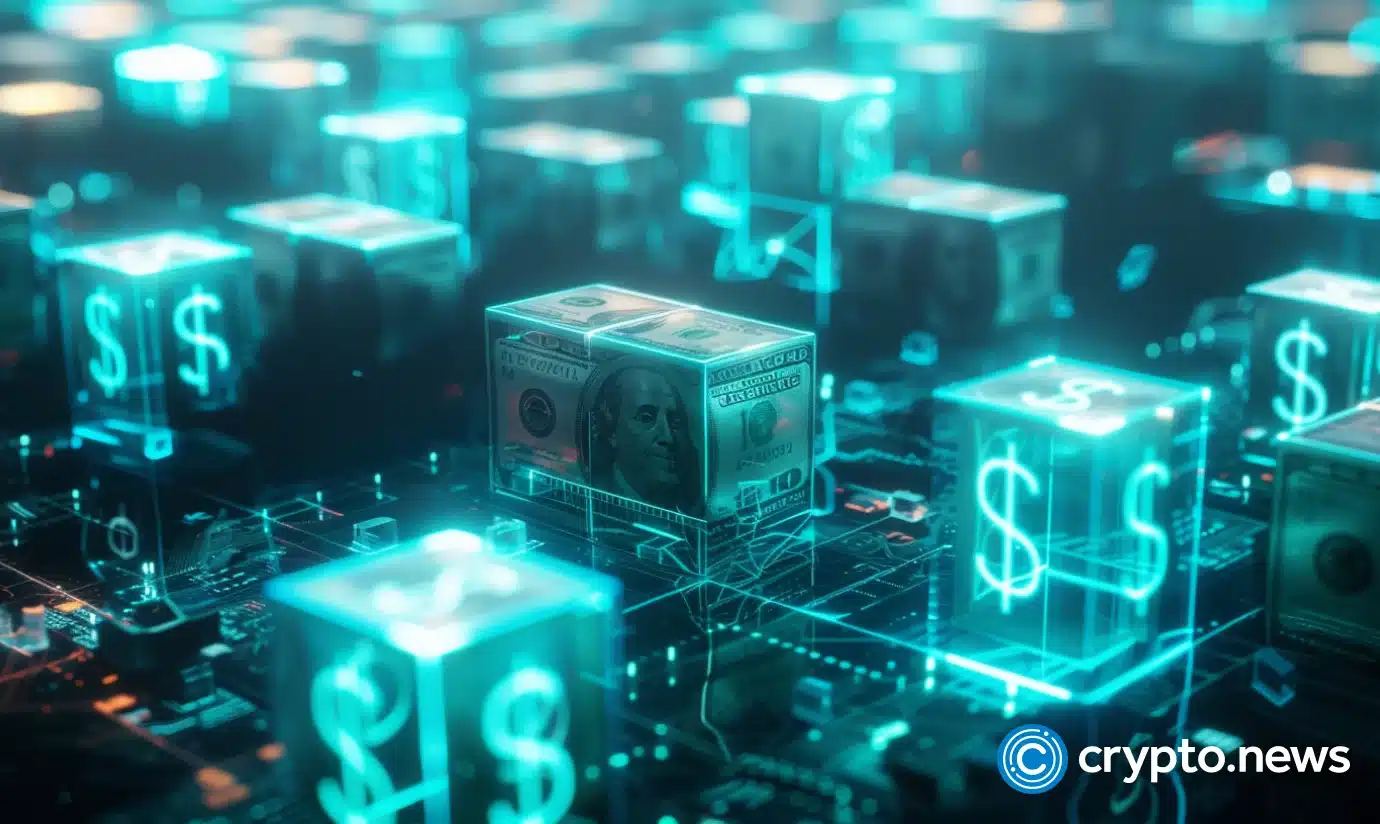
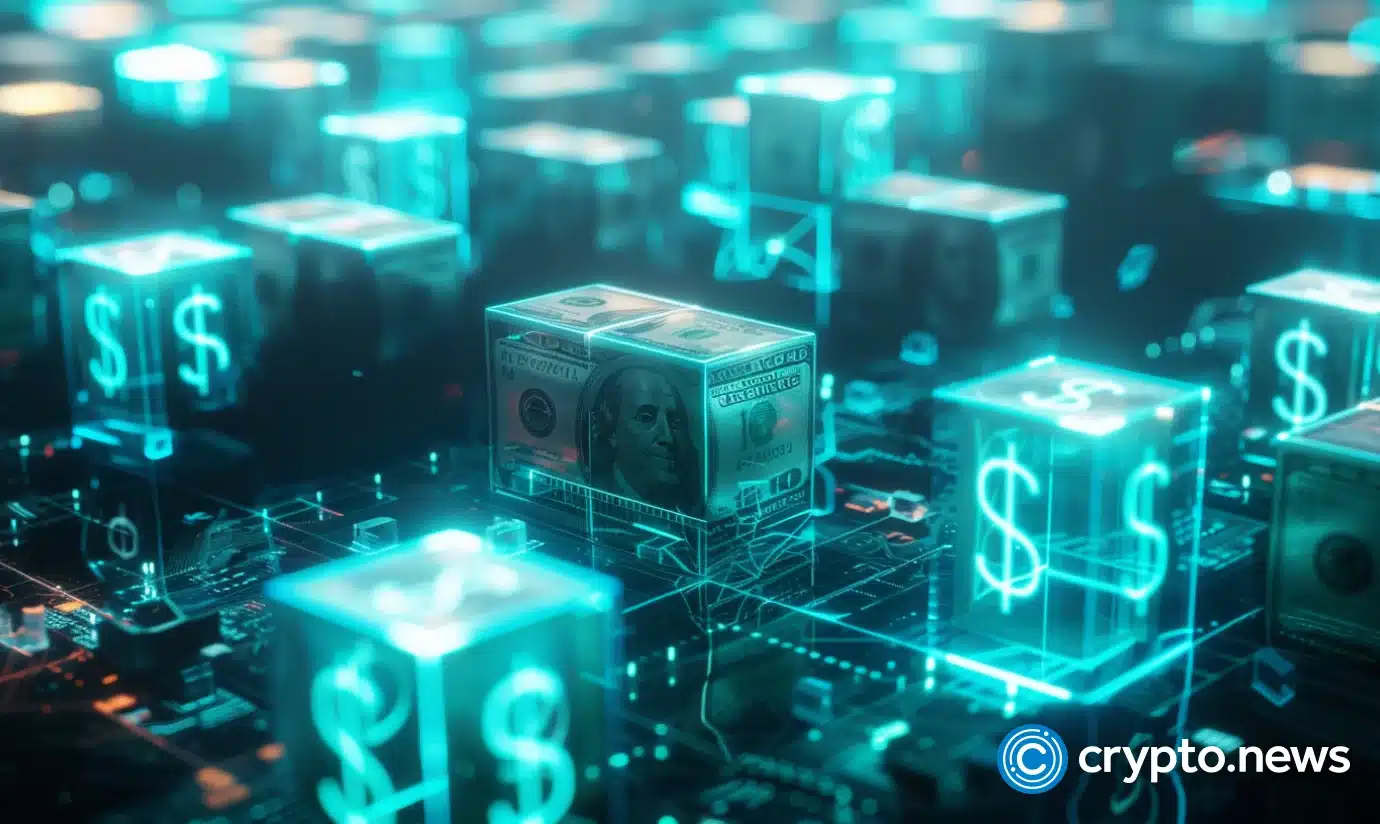
A token swap, or crypto swap, is like trading your favorite Pokemon cards with anyone you like online. But instead of trading cards, you can trade digital crypto assets in exchange for your favorite crypto tokens, often, without a conventional centralized crypto exchange.
In this article, we take a deep dive into crypto token swaps, common types of swaps, how they work, and how you can perform a crypto swap easily.
What is a crypto swap?
What is a crypto swap?
A crypto swap is an exchange of cryptocurrencies usually performed on dedicated swap platforms, or decentralized exchanges (DEX).
Instead of going the traditional way of selling a fiat currency for a crypto token, you can directly swap crypto tokens. This is helpful especially if you want to avoid KYC restrictions and don’t want to pay additional fees associated with centralized crypto exchanges.
Swapping tokens in crypto can be done on the same blockchain or across different blockchains, a feature offered by almost every decentralized crypto swap platform. Swapping cryptocurrencies is an ideal way to rebalance your crypto holdings, or step foot into the exciting world of decentralized finance (DeFi) where lending and borrowing can be a game changer for many users.
Types of Token Swaps
Token swaps can have many types, but the most common and important categories include on-chain and off-chain swaps.
Centralized exchanges usually carry out off-chain swaps, facilitating the transaction inside their own database as opposed to on a public ledger. Although this kind of token swap is quicker and might have cheaper costs, it presupposes confidence in a centralized exchange.
On the other hand, on-chain swaps take place solely on the blockchain and manage user-to-user transactions via smart contracts. These on-chain swaps are very common on DEX platforms like Uniswap and PancakeSwap, where buyers and sellers conduct on-chain transactions with each other via decentralized processes.
Both types of cryptocurrency swaps have special benefits: off-chain swaps give efficiency and speed, while on-chain swaps offer transparency and decentralization. You can choose any type of token swap based on your comfort level with speed, security, and control over your assets.
Common use cases
For several reasons, token swaps are becoming more and more common, particularly in the DeFi community. Portfolio diversification is one of the main use cases; investors can simply exchange crypto tokens to distribute their funds among several projects without leaving the cryptocurrency market. Yield farming, in which users exchange tokens needed to engage in yield-generating activities on DeFi platforms, is another popular application.
Since some projects only work with particular crypto tokens, swapping tokens in cryptocurrency is also useful for accessing decentralized applications (dApps) and making NFT purchases. For example, a token swap allows you to join a gaming platform that requires a specific cryptocurrency asset with little difficulty. As a result, token swaps are now an essential component of the crypto toolbox, facilitating user interaction with a variety of applications.
How do crypto swaps work?
There are some key fundamental ways in which cryptocurrency swaps work, and they frequently differ depending on whether they are off-chain or on-chain.
Smart contracts play a key role in on-chain swaps. The smart contract returns the swapped token to the user after locking the original token in escrow when a user initiates a swap. Because these transactions are decentralized and trustless, users maintain complete control over their money throughout the transaction, negating the need for an intermediary.
Cryptocurrency traders provide liquidity to liquidity pools provided by decentralized exchanges (DEXs). This allows other users to swap their favorite tokens and essentially creates an organic marketplace of buyers and sellers, which eliminates the need of traditional order books.
On the other hand, off-chain swaps are purely conducted on centralized exchanges, hence their data is not recorded on any public blockchain. This method allows users to benefit from lower fees and faster transaction processing times.
Both on-chain and off-chain swaps have different benefits when it comes to transparency, speed, and cost, which allows users the liberty to choose the method that suits their needs. With crypto swaps explained, let’s move on to why they’re important.
Why are token swaps important in crypto?
The crypto ecosystem can only thrive if its accessibility and functionality become at par with the understanding of crypto users. This is where token swaps come into the picture, as they fulfill both these parameters.
Token swaps give users the liberty to adapt to volatile crypto market conditions as they can easily get new tokens by participating in DeFi activities including staking, lending, and yield farming. In addition, users can also diversify their portfolios and swap tokens through liquidity pools. All of this opens up a new pathway for new crypto users to get familiar with the world of web3.
The benefits of token swaps aren’t just limited to the crypto user. Blockchains also benefit from token swaps, as their interoperability is enhanced, thanks to cross-chain swaps, that facilitate the exchange of assets between blockchains.
This entire procedure attracts new investment and promotes innovation across blockchain projects that start to provide a more diverse amount of tokens and DeFi platforms to the end users.
Crypto token swap vs token migration
A token swap is defined as exchanging one cryptocurrency for another, which can be on the same blockchain or across different blockchains. The process of token swapping allows users to diversify their crypto asset holdings and reposition themselves in the volatile cryptocurrency markets.
On the other hand, token migration is the process of a cryptocurrency project moving from one blockchain to another. For example, a layer-1 protocol can decide to move to a layer-2 blockchain to get additional benefits of lower transaction costs and increased speeds.
When token migration happens, usually a cryptocurrency project issues a new token with a new ticker, and all users have the option to seamlessly transition their current holdings to the new one. A recent example of this is $MATIC which was migrated to $POL, and the spot holdings of $MATIC tokens held by users were converted into $POL automatically.
Risks and considerations
Token swaps do offer a certain level of comfort to users, however, they are associated with some risks as well. For example, while doing on-chain swaps cryptocurrency traders can experience issues like slippage, where a swap doesn’t get executed at the intended price levels, which can lead to potential losses.
Another risk is that users have to evaluate the security of the platform on which they are conducting these token swaps. This is because if smart contracts running behind a token-swapping platform are compromised, all funds can be lost.
In off-chain token swaps, users can face the risk of counterparty default, which means that the centralized exchange sometimes fails to execute the transaction properly. While the fees and speed of a transaction might be lower on off-chain token swaps, users still have to analyze the security aspect of the centralized exchange.
In token migrations, users can face issues related to wallet compatibility, lack of support during the transition process, and the crypto exchange not supporting the token migration to begin with. All of these risks can lead to potential losses, and to avoid this, users can make sure that the cryptocurrency project’s team is reliable and has announced a partnership with the exchange before doing the token migration.
How to perform a token swap: step-by-step guide?
A token swap is a simple process, here are some steps you can follow to complete a token swap.
Connect your wallet: Connect or create a digital crypto wallet from scratch, for example, Metamask. Make sure you have the crypto token you want to swap in it.
Choose your swap tokens: Go on any decentralized exchange, for example, Uniswap, and select both tokens, i.e. the token you want to swap and the token you want to get in return.
Enter the amount: Enter the amount of tokens you want to swap.
Double-check the amount and fees: Check the fees displayed on Uniswap that will occur for the entire swap process.
Accept the transaction: Accept the transaction in your digital crypto wallet.
Wait for confirmation: Wait for a few seconds to minutes for the transaction to complete and for the tokens to show in your digital crypto wallet. You have now swapped a token in the cryptocurrency market!
Where to swap crypto?
Crypto swaps can be done on centralized exchanges like Binance, OKX, Coinbase, etc. You can also select a decentralized exchange like PancakeSwap or Uniswap. Both of these options have their own advantages, for example, centralized exchanges offer a user-friendly interface with customer support.
Meanwhile, a DEX platform provides control over your assets and privacy, as there is no requirement to do KYC unlike on the centralized platforms.
Are crypto swaps taxable?
In most countries, crypto swaps can be a taxable transaction. Exchanging cryptocurrencies triggers capital gains or losses so it may be taxable. It is advised to consult a tax expert and also check your country’s laws before engaging in any crypto swap transaction.
Also, do research before engaging in any crypto swaps due to the high risks involved in both off-chain and on-chain swaps. To swap token in crypto, it’s important to know the ins and outs of the exchange or service you’re dealing with as well as tax implications,
Source link

Wave 2 And 5 Targets Put XRP At $7 And $13

NEIRO’s success shadowed; Catzilla’s presale sparks new market buzz

3 Key Metrics That Hint Bitcoin Price Will Hit $100K Soon

Macro Guru Raoul Pal Predicts Crypto Market Will Rally ‘Pretty Strongly’ Into Year-End – Here’s His Outlook

Blockchain auditor Hacken launches AI-powered MiCA-compliance tool for crypto firms

Crypto in 2024: A Game-Changing Year for Investors

Philippines SEC releases new crypto regulatory framework draft

Another Publicly Traded Firm Just Adopted a Bitcoin Reserve Strategy

MicroStrategy Announces Special Shareholders Meeting to Buy More Bitcoin

These 2 Solana killers have potential turn $1000 into $100k in the next 10 week

BTC Touches $94K, VIRTUAL Soars 35%, ZEC Gains 20%

Trump Makes More Pro-Crypto Appointments

Solaxy presale raises $4.5M for Solana Layer 2 solution

Elon Musk xAI Secures $6B To Boost Generative AI Expansion: Details

Metaplanet Bitcoin Reserves Grow With Fresh $61 Million Purchase
182267361726451435

Why Did Trump Change His Mind on Bitcoin?

Top Crypto News Headlines of The Week

New U.S. president must bring clarity to crypto regulation, analyst says

Will XRP Price Defend $0.5 Support If SEC Decides to Appeal?

Bitcoin Open-Source Development Takes The Stage In Nashville

Ethereum, Solana touch key levels as Bitcoin spikes

Bitcoin 20% Surge In 3 Weeks Teases Record-Breaking Potential

Ethereum Crash A Buying Opportunity? This Whale Thinks So

Shiba Inu Price Slips 4% as 3500% Burn Rate Surge Fails to Halt Correction

Washington financial watchdog warns of scam involving fake crypto ‘professors’

‘Hamster Kombat’ Airdrop Delayed as Pre-Market Trading for Telegram Game Expands

Citigroup Executive Steps Down To Explore Crypto
Mostbet Güvenilir Mi – Casino Bonus 2024

NoOnes Bitcoin Philosophy: Everyone Eats
Trending

 3 months ago
3 months ago182267361726451435

 Donald Trump5 months ago
Donald Trump5 months agoWhy Did Trump Change His Mind on Bitcoin?

 24/7 Cryptocurrency News4 months ago
24/7 Cryptocurrency News4 months agoTop Crypto News Headlines of The Week

 News4 months ago
News4 months agoNew U.S. president must bring clarity to crypto regulation, analyst says

 Price analysis4 months ago
Price analysis4 months agoWill XRP Price Defend $0.5 Support If SEC Decides to Appeal?

 Opinion5 months ago
Opinion5 months agoBitcoin Open-Source Development Takes The Stage In Nashville

 Bitcoin5 months ago
Bitcoin5 months agoEthereum, Solana touch key levels as Bitcoin spikes

 Bitcoin5 months ago
Bitcoin5 months agoBitcoin 20% Surge In 3 Weeks Teases Record-Breaking Potential


